Product developers frequently encounter elastic strap failures—from premature fatigue in outdoor gear to attachment point failures in medical devices—often stemming from design decisions made without understanding material behavior and performance trade-offs. As a custom webbing manufacturer, we’re addressing these common design challenges to help engineers navigate the complex considerations that determine whether an elastic strap will perform reliably or fail prematurely in real-world applications.
Designing an elastic strap requires careful attention to material, stretch ratio, attachment, ergonomics, sustainability, and testing. Elastane-core materials provide >95% recovery, while poor attachments can reduce strength by 30–50%. Proper design ensures durability, comfort, and consistent performance across applications.
Engineering insights and test-backed design tips to optimize elastic strap performance and prevent failure using proven, data-driven principles.
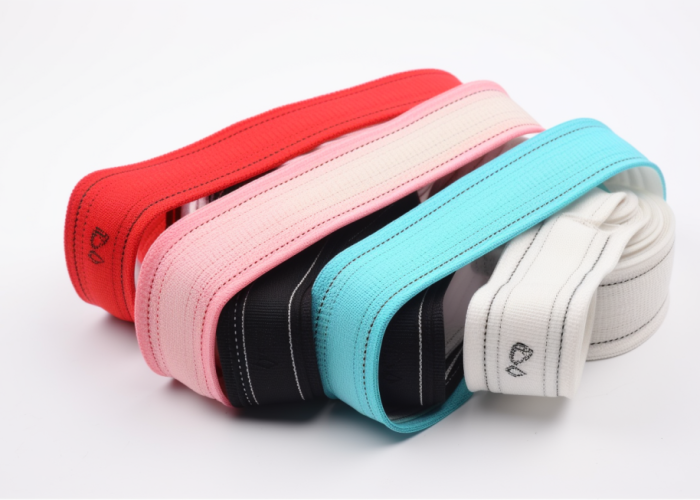

Webbing manufacturing expert with 15+ years of experience helping product developers build high-performance straps for industrial, medical, and outdoor use.
Elastane-core constructions are recommended for high-performance applications requiring >95% recovery rates, while woven polyester elastics suit cost-sensitive applications with moderate stretch demands. Elastane performs from -20°C to +80°C, whereas polyester elastics handle -40°C to +120°C but with lower stretch recovery.
Key Material Selection Points:
Elastane-core materials deliver 18-25% stretch capacity with >95% recovery after 10,000+ cycles and retain >90% tensile strength after 1,000 hours accelerated aging. Woven polyester elastics show 15-20% strength degradation under identical conditions but offer superior thermal stability. Optimal spandex content ranges 10-15% for balanced stretch and durability.
From manufacturing experience, fitness equipment and medical devices benefit from elastane’s consistent recovery, while automotive and industrial applications requiring temperature stability above ±40°C perform better with polyester elastics. Elastane loses 20-30% recovery efficiency above 80°C, while polyester maintains structural integrity but reduces elasticity at extremes.
Design Takeaway: For consistent stretch recovery in moderate temperatures (-10°C to +60°C), specify elastane-core with 12-15% spandex content. For extreme temperatures or cost-sensitive projects, choose woven polyester elastics with thermal additives. Always include UV stabilization for outdoor applications.
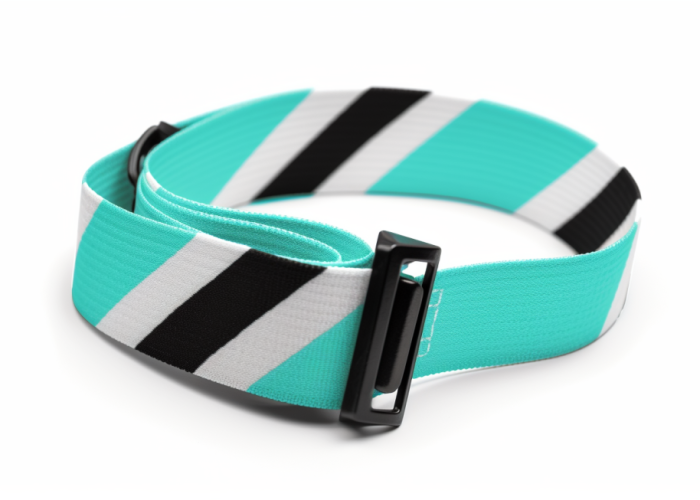
Optimal stretch-to-load ratios depend on application requirements, with most elastic straps performing best at 50-70% of maximum stretch capacity to ensure longevity and consistent recovery. For load-bearing applications, maintain working loads below 60% of ultimate tensile strength, with elastane-core straps typically handling 150-300N per inch width at optimal stretch ratios.
Performance Calculation Guidelines:
Performance testing shows elastane-core straps achieve 18-25% stretch with recovery rates >95% when operated at 50-70% maximum extension. At 100% stretch capacity, recovery drops to 85-90% after 1,000 cycles. Load capacity varies significantly: 12mm elastane straps handle 200-250N at 15% stretch, while equivalent polyester elastics manage 180-220N but with slower recovery. Working load calculations should account for safety factor of 3:1 for critical applications.
From manufacturing experience, outdoor gear requiring frequent stretch cycles performs optimally when designed for 12-15% working stretch, while medical applications demanding precise tension control specify 8-12% stretch ranges. We’ve observed that exceeding 80% stretch capacity accelerates fatigue failure, particularly in temperature-cycled environments. Fatigue life decreases exponentially beyond 70% stretch utilization, dropping from 50,000+ cycles to under 10,000 cycles.
Design Takeaway: Calculate working stretch at 50-70% of material’s maximum capacity and maintain loads below 60% of ultimate tensile strength. For critical applications, specify safety factor 3:1 and validate performance through accelerated fatigue testing at your target stretch range.
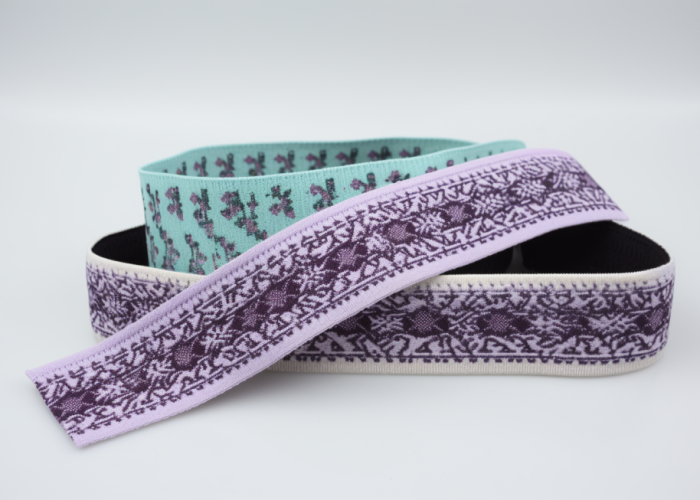
Sewn terminations with bartacking maintain 85-90% of base material strength, while mechanical clamps and crimps achieve 70-80% strength retention when properly sized and installed. Heat-sealed terminations offer 60-75% strength retention but provide superior environmental sealing for outdoor applications.
Attachment Strength Retention:
Strength retention varies significantly by method: bartacked terminations with 5mm+ stitch overlap maintain 250-300N strength on 12mm elastane straps, compared to 200-250N for mechanical crimps. Adhesive bonding achieves 80-85% strength retention when using polyurethane-based adhesives but requires 24-48 hour cure times. Hardware compatibility testing shows stainless steel components maintain performance, while zinc-plated hardware shows 15-20% strength reduction due to galvanic corrosion over time.
From manufacturing experience, high-cycle applications like fitness equipment benefit from sewn terminations with reinforcement patches, while marine applications requiring corrosion resistance perform better with welded stainless steel attachments. Poor termination design accounts for 60-70% of field failures, particularly when attachment width exceeds strap width by >2:1 ratios. Integration methods must account for stress concentration at attachment points.
Design Takeaway: For maximum strength retention, specify bartacked sewn terminations with 5mm overlap and reinforcement patches. For environmental resistance, use welded stainless steel attachments with proper stress distribution. Always validate attachment strength at 150% working load before production.
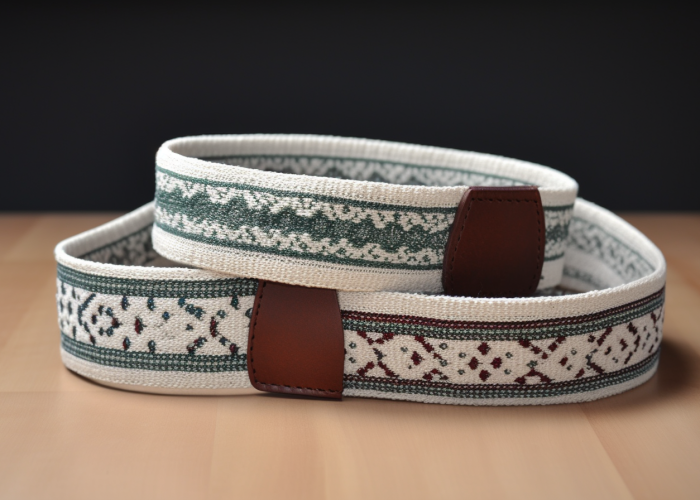
Ergonomic design requires strap widths of 15-25mm for comfort during extended contact, with edge finishing and surface texture considerations to prevent skin irritation and pressure points. Contact pressure should remain below 30kPa for comfort, requiring load distribution across minimum 200mm² contact area for typical applications.
Ergonomic Design Requirements:
Comfort testing reveals 20mm width straps distribute load optimally for body-worn applications, while narrower 12mm straps create pressure points above 150N loads. Surface texture impacts user acceptance: smooth polyester surfaces reduce friction but may slip, while textured surfaces provide grip but can cause abrasion during extended use. Edge finishing becomes critical—heat-cut edges prevent fraying but create sharp contact points, while bound edges add bulk but improve comfort.
From manufacturing experience, fitness wearables perform best with 25mm width and rounded edges, while industrial safety applications requiring high visibility specify reflective thread integration. We’ve observed that padding integration reduces contact pressure by 40-50% but increases bulk and manufacturing complexity. Color considerations affect heat absorption in outdoor applications, with light colors reducing surface temperatures by 10-15°C.
Design Takeaway: For body-worn applications, specify 20-25mm width with bound edges and maintain contact pressure below 30kPa through proper load distribution. Consider surface texture balance between grip and comfort, and validate user acceptance through wear testing with target demographics.
Recycled polyester elastics maintain 90-95% of virgin material performance while reducing environmental impact by 60-70%, making them viable alternatives for most applications except extreme temperature or UV exposure conditions. Post-consumer recycled content up to 50% shows minimal performance degradation in standard testing.
Sustainable Material Performance:
Recycled elastane-core materials achieve 85-90% recovery rates versus 95%+ for virgin materials, with tensile strength retention at 180-220N compared to 250-300N for equivalent virgin straps. GRS-certified recycled polyester maintains thermal stability from -30°C to +100°C while meeting OEKO-TEX Standard 100 requirements. Lifecycle assessments show 40-50% carbon footprint reduction using recycled content.
Manufacturing experience reveals recycled materials excel in indoor applications like fitness equipment and luggage but show accelerated UV degradation in outdoor use. Bio-based polyester alternatives offer end-of-life biodegradability but currently cost 30-40% more with slightly reduced durability. Mechanical recycling maintains fiber integrity better than chemical recycling for elastic applications.
End-of-life strategies include material recovery programs and industrial composting for bio-based variants. REACH compliance ensures safety across all recycled material options.
Design Takeaway: For indoor applications, specify GRS-certified recycled polyester with up to 50% recycled content. For outdoor use, limit recycled content to 25-30% and include UV stabilizers. Consider bio-based alternatives for disposable applications requiring end-of-life biodegradability.
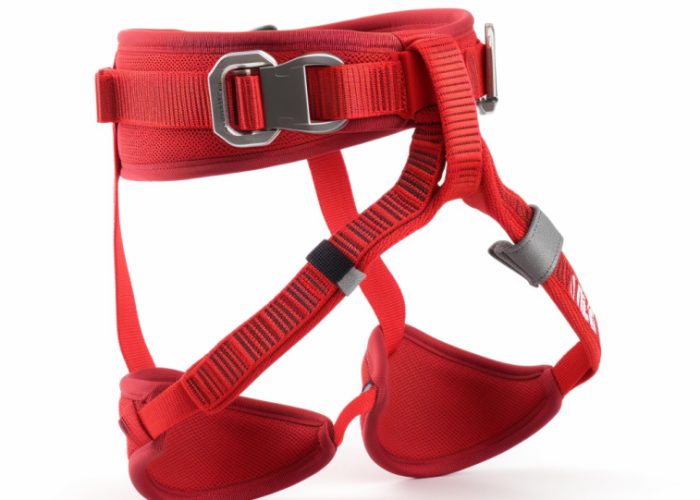
Comprehensive validation requires accelerated aging tests, fatigue cycling at 150% working load, and environmental exposure testing to simulate 2-5 years of service life within 30-90 days. Testing protocols should follow ASTM D6775 for textiles and include application-specific stress scenarios.
Validation Testing Requirements:
Accelerated aging at 70°C for 168 hours simulates 2 years outdoor exposure, while fatigue testing at 10,000-50,000 cycles validates durability expectations. Tensile strength should retain >80% after aging with recovery rates >90% after fatigue cycling. UV exposure testing requires 1,000+ hours under ASTM G155 conditions for outdoor applications, maintaining 75% strength retention minimum.
Manufacturing experience shows temperature cycling from -20°C to +60°C reveals material interface failures not detected in single-temperature tests. Salt spray testing per ASTM B117 validates hardware corrosion resistance over 500+ hours. Load-hold testing at 80% working load for 24-72 hours identifies creep and stress relaxation issues.
Validation sequence should progress from material testing to component testing to full assembly validation. Statistical sampling requires minimum 30 samples per test condition for reliable data.
Design Takeaway: Implement three-phase validation: material characterization, component testing, and full assembly verification. Follow ASTM D6775 protocols with application-specific additions and maintain >80% strength retention as acceptance criteria across all test conditions.
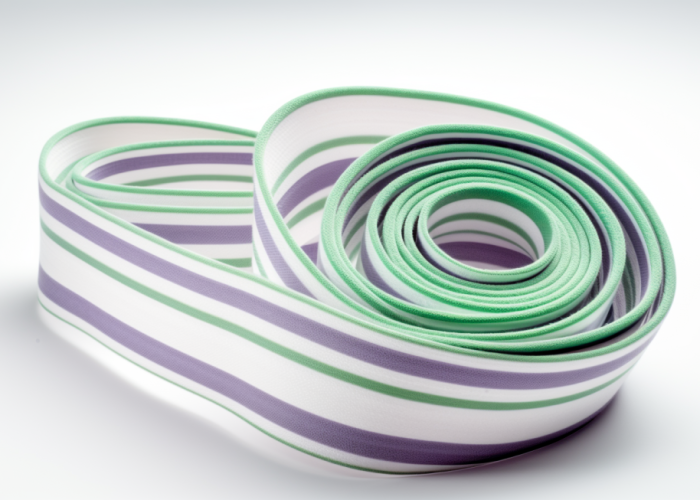
Elastic strap design success depends on material selection, performance optimization, proper attachment methods, ergonomic considerations, sustainable options, and thorough validation. Elastane-core materials with proper termination techniques deliver superior performance for most applications. Contact us to explore custom elastic strap manufacturing solutions tailored to your product requirements.
Our minimum order quantity varies by specification complexity, typically starting at 1,000 meters for standard constructions and 500 meters for specialized elastic strap designs. We accommodate prototype quantities of 50-100 meters for testing and validation purposes.
Development timeline ranges from 2-3 weeks for standard modifications to 4-6 weeks for completely custom elastic strap constructions. This includes material selection, prototype development, testing validation, and production setup for your specific requirements.
Yes, we engineer elastic straps to meet precise stretch percentages (8-25%) and recovery rates (85-98%) based on your application needs. We provide performance validation testing and certification documentation for critical applications requiring specific mechanical properties.
We conduct comprehensive testing including tensile strength, fatigue cycling, UV resistance, and temperature performance per ASTM standards. We provide detailed test reports and can pursue third-party certifications like OEKO-TEX Standard 100 when required.
Our GRS-certified recycled polyester elastic straps maintain 90-95% of virgin material performance while reducing environmental impact by 60-70%. We recommend recycled content levels based on your specific performance and sustainability requirements.
Yes, we offer solution-dyed coloring, custom Pantone matching, and integrated branding through jacquard weaving or printing techniques. Color integration maintains elastic properties while providing permanent, fade-resistant identification for your elastic strap products.